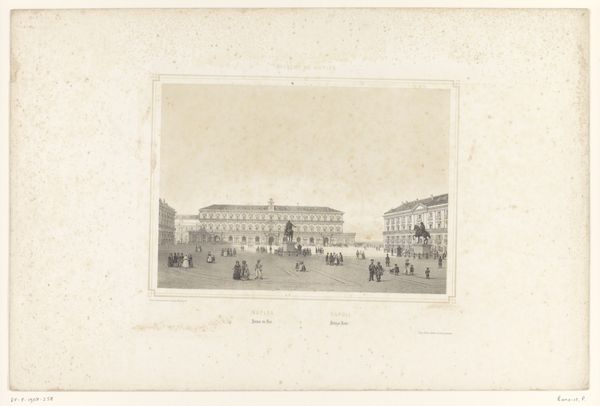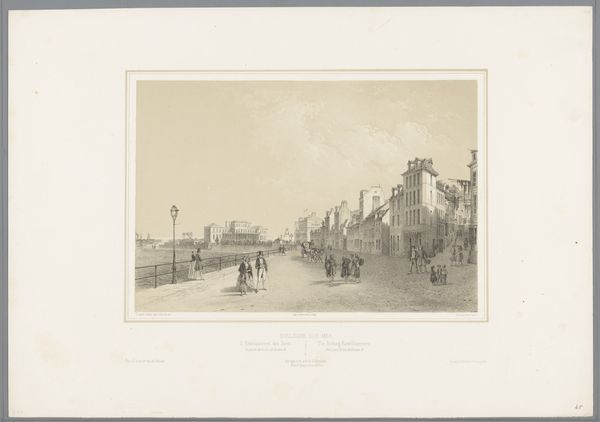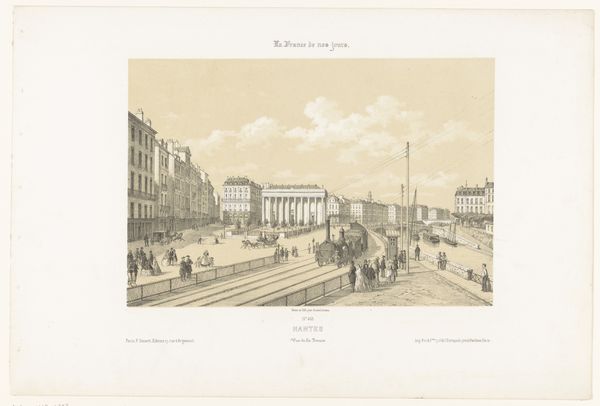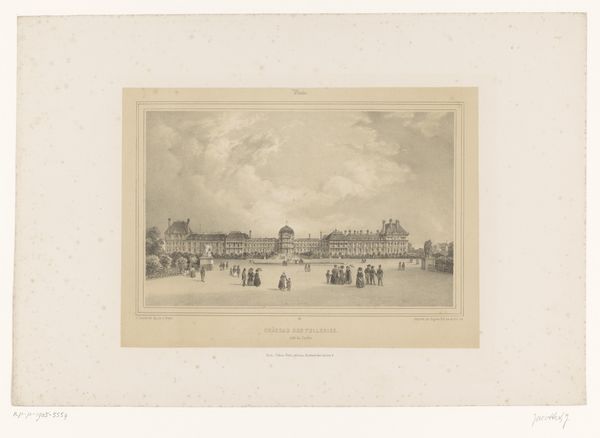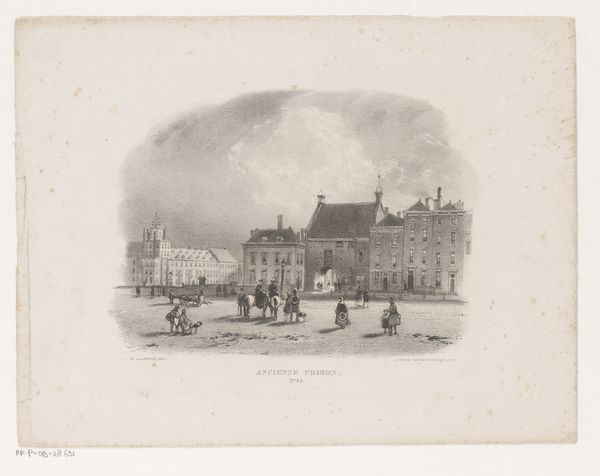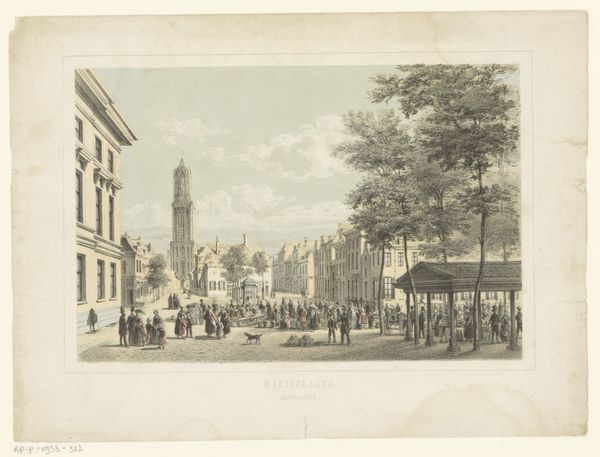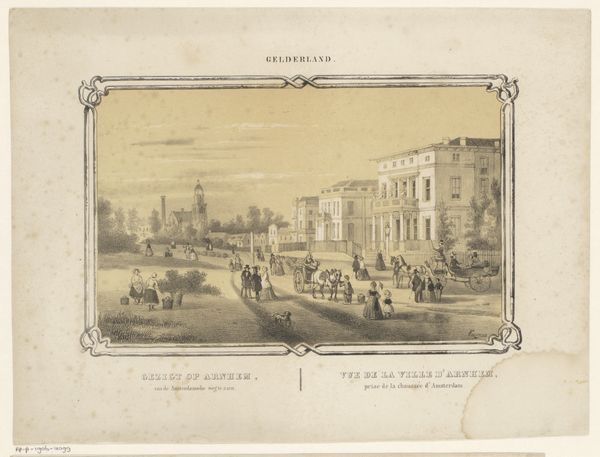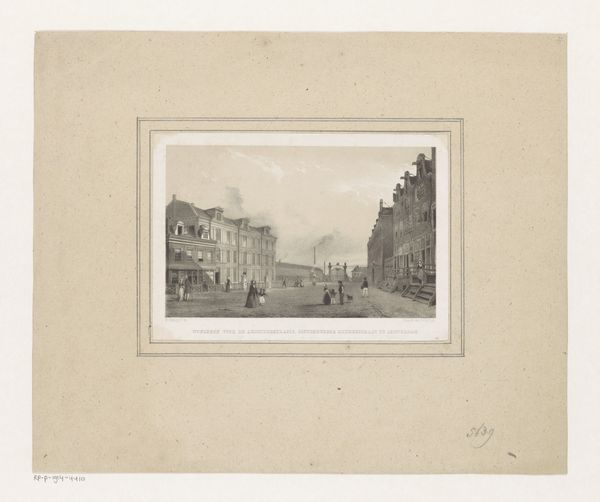
Zicht op de Cour d'Honneur van het Kasteel van Versailles 1843 - 1844
0:00
0:00
philippebenoist
Rijksmuseum
print, engraving
#
16_19th-century
# print
#
landscape
#
romanticism
#
cityscape
#
engraving
Dimensions: height 303 mm, width 446 mm
Copyright: Rijks Museum: Open Domain
Editor: So, this is Philippe Benoist's "Zicht op de Cour d'Honneur van het Kasteel van Versailles," an engraving from the 1840s. It’s a cityscape, quite detailed, but something about the muted tones makes it feel a bit melancholic. What strikes you about this piece? Curator: The Cour d'Honneur at Versailles wasn't just a pretty backdrop; it was a stage for power, where hierarchies were performed and reinforced. Considering this print was made after the Revolution, do you see any tension between the Romanticized view and the site’s complex history of privilege? Editor: I hadn’t thought about it that way. I was focusing on the landscape aspect of the print, but I guess it does flatten out any sense of revolutionary change or the complex political reality of the time. It almost feels sanitized. Curator: Exactly. The print, as a medium, also becomes interesting. It's a reproductive technology, meant for wider distribution. Who was Benoist trying to reach? And what kind of message about power and social order was he disseminating to that audience? Think about the engraving process and how that also subtly 'orders' what is being communicated. Editor: So it’s not just about depicting the architecture, but about re-establishing a certain narrative, maybe even subtly reinforcing a pre-Revolution social order? Curator: Precisely. Consider, too, the figures populating the Cour. How are they posed and positioned in relation to the architecture, and what stories do their arrangements, whether intentional or not, suggest? Editor: I guess I see how choosing to depict it this way is a statement in itself. I definitely see it differently now. Curator: These romantic landscapes can obscure more than they reveal. Engaging with that tension is how we can breathe fresh insights into the work. Editor: Thanks! Now I am definitely looking at this work through a completely different lens.
Comments
No comments
Be the first to comment and join the conversation on the ultimate creative platform.

